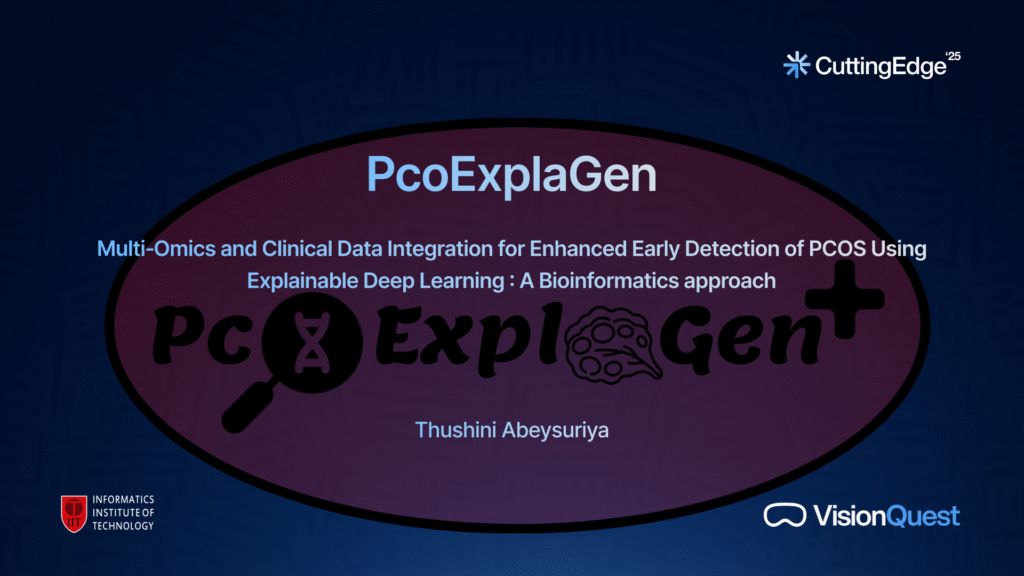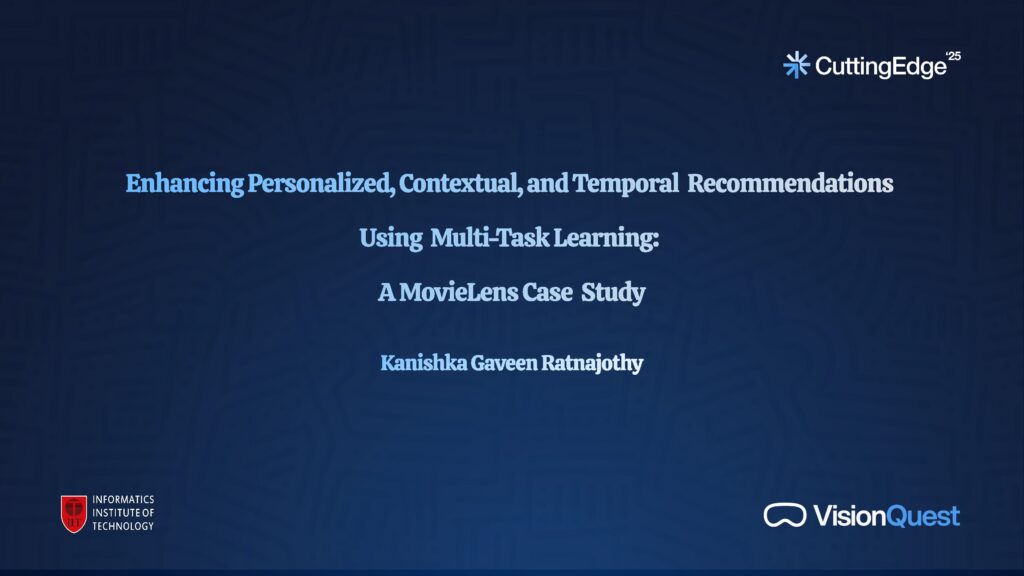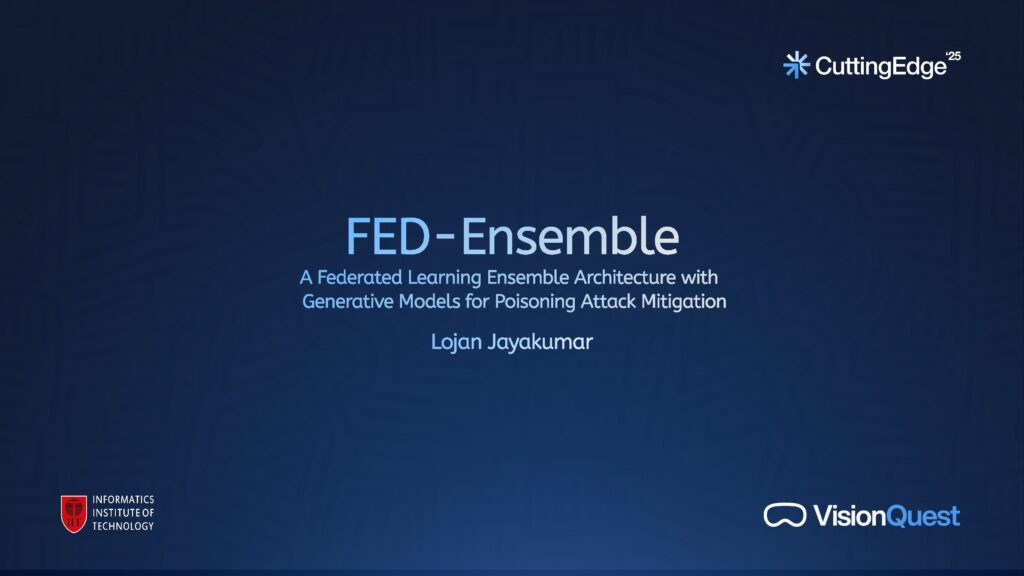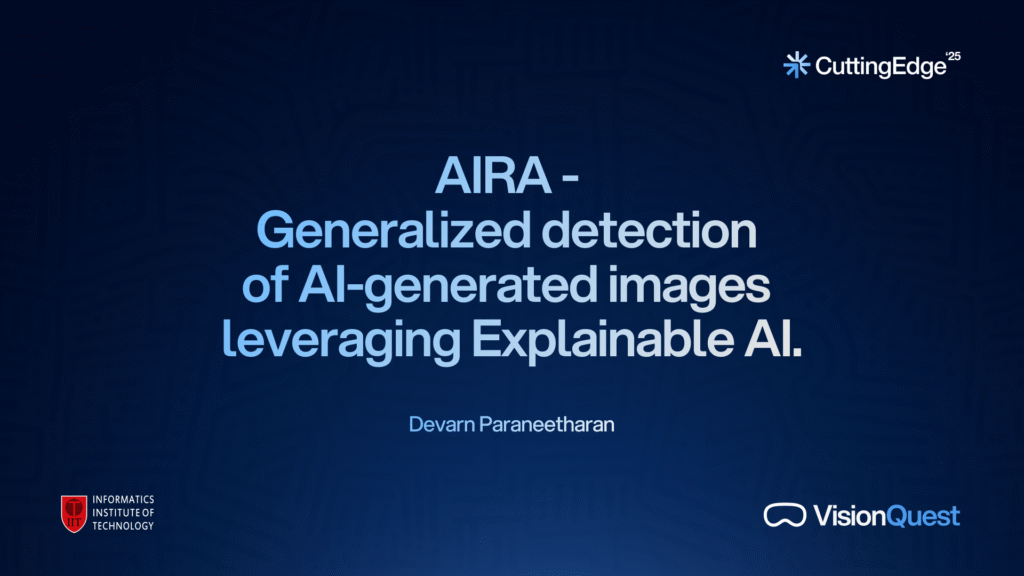Developing a Low-Cost Air Pollution Monitoring System for Colombo

Air pollution poses a significant threat to public health, particularly in urban environments of
developing nations where monitoring infrastructure is often sparse or outdated. This thesis
presents the design and deployment of a low-cost, real-time air quality monitoring system for Colombo, Sri Lanka. Utilizing a suite of low-cost sensors ranging from particulate matter detectors (SDS011) to gas sensors (MQ and MiCS series), GPS modules, and environmental sensors (DHT22, BMP180) the system captures a wide array of environmental parameters including PM2.5, PM10, CO, NO₂, SO₂, temperature, humidity, and pressure. Data is collected via Raspberry Pi-based architecture and uploaded to Google BigQuery, where it undergoes statistical preprocessing and machine learning-based anomaly detection using Autoencoders, Gaussian Mixture Models, and Isolation Forests. Visualizations are delivered through interactive dashboards in Looker Studio, providing public access and decision-making support for authorities. The proposed system aims to bridge the gap between data scarcity and high spatial resolution needs in urban air monitoring. The results indicate that, when calibrated and combined with intelligent preprocessing, low-cost sensors can offer reliable environmental insights, thus supporting data-driven governance and community health awareness. The project adheres to strict ethical, legal, and data security
standards to ensure responsible deployment and use.
VoiceBlockly: Voice Code Generation in Block-Based Programming Using a Novel Multi-Agent Framework

Block-based programming (BBP) has proven effective in teaching programming concepts, offering a visual and more intuitive approach than traditional text-based programming. However, accessibility in BBP remains an underexplored area, particularly for students with disabilities who may benefit from alternative input methods, such as voice commands. This project aims to bridge this accessibility gap by integrating natural language processing (NLP) capabilities into a BBP interface, enabling users to generate programming blocks through voice commands.
To achieve effective voice to block code generation, the project employs a novel multi-agent (MA) framework that integrates several large language models (LLM) working together. Each model is designed to interpret user commands and generate corresponding block syntax. A novel aggregation algorithm based on uncertainty quantification (UQ) is introduced to combine outputs from multiple agents, ensuring the accuracy and validity of the generated blocks. This approach enables the system to produce high quality output by leveraging the collective strengths of multiple agents.
The prototype demonstrates that the BBP environment effectively translates NL input into accurately rendered code blocks within the interface. Testing and evaluation results indicate that the proposed MA framework outperforms the leading state-of-the-art (SOTA) MA framework by 6% in programming tasks, achieving a Pass@1 score of 75% on the HumanEval dataset. Furthermore, it surpasses the same MA framework by 6% in general domain tasks, attaining an accuracy of 65% on the TruthfulQA dataset.
Machine Learning based Respiratory Sound Analysis for Disease Detection (Pulmo Sense)

Respiratory illnesses like COPD and asthma offer global health implications. Early detection is vital yet problematic due to limited diagnostic technologies and manual assessment by healthcare professionals. This project addresses the need for a machine learning based system to detect respiratory problems through analyzing respiratory sounds.
An ensemble model utilizing feature CNNs was created, including audio preprocessing approaches such as noise handling and segmentation to preprocess breathing sound data for analysis. Each feature CNN consisted of eight layers. Features like Mel-Frequency Cepstral Coefficients (MFCC), Chroma, and Mel-Spectrogram were retrieved to facilitate disease classification. The model was subjected to hyperparameter optimization and cross-validation to enhance its performance.
Preliminary testing shows promising results, with the model achieving an accuracy of 86% and sensitivity of 88% on a diverse dataset of lung sounds. These results indicate the model’s potential in supporting early disease detection, even outside clinical settings.
OptiBooking: Hotel Booking Cancellation Prediction and Overbooking Recommendation

OptiBooking is a predictive decision-support system developed to address the challenges of hotel booking cancellations and ineffective overbooking strategies within the Sri Lankan hospitality industry. The solution is specifically designed for small to medium-sized hotels, which form the majority of Sri Lanka’s hotels and are most vulnerable to fluctuations in guest reservations. The system provides a web interface that allows front desk staff, managers, and super users to perform key tasks such as adding new bookings manually or uploading bulk bookings via CSV files, viewing and managing reservations, monitoring cancellation likelihoods, and implementing overbooking strategies. Different user roles are defined to provide access privileges to maintain security and usability across staff levels. The backend of the system is built using Python, where core booking operations, cancellation probability predictions, and automated customer email notification features are handled. A trained machine learning model predicts the likelihood of cancellation based on booking characteristics, supporting proactive operational decision-making. Persistent booking data, room data, and prediction results are stored in a MySQL database. The OptiBooking project not only improves operational efficiency by reducing last-minute cancellations and increasing occupancy rates but also promotes sustainable digital transformation in the hospitality sector. Designed with modularity, accessibility, and future scalability in mind, OptiBooking lays a strong foundation for real-world adoption and continued enhancement.
Floro-X

The floriculture industry faces a major issue due to the extremely perishable characteristics of its products, covering inventory uncertainty due to demand variability across consumers and seasonality. Seasonal fluctuations have the impact of leading to enormous wastage of flowers, monetary loss, and inefficiency in handling stocks. The traditional method of inventory control, which is still in use in small and medium-scale florist enterprises lacks the tools, technologies and prediction capabilities required to take necessary measures to address such issues. As a solution to these constraints, this project introduces Floro-X, a forecasting-based inventory management system for the floriculture industry.
Floro-X is a web-based software solution that offers a demand prediction solution to florist managers in order to align inventory levels with real-world consumer demand. Using Facebook Prophet, a well-tested time series forecasting algorithm, the machine learning model is trained from historical sales trends and seasonal patterns for five types of flowers. The prediction algorithm delivers forecast accuracies above 85% for almost all flowers enabling users to make better inventory and sales planning decisions as to avoid overstocking or running out of stock. System features a user-friendly interface accessible via desktop, with fundamental modules of stock management, demand planning, and user profile handling. Florist managers are able to update the inventory details, place future demand forecast orders, and examine previously calculated outcomes, all from a single, user-friendly console.
While the initial version of Floro-X runs with fixed data sets which was used for training, future enhancements will involve the integration with Point-of-Sale (POS) systems to enable real-time tracking of sales and retraining of the model based on new sales data in an automated process, inclusion of real-time weather as a forecasting variable, and expanding prediction capability to include more varieties of flowers. Lastly, Floro-X addresses a major issue in the flower supply chain by introducing digital transformation to a traditionally manual and labour-intensive industry, helping florists make smarter, on-time, data driven decisions. At its core, the adoption of Floro-X facilitates a more profitable, robust, and sustainable floral system, a platform for future innovation and growth within the floriculture sector across the globe.
Enhancing Personalized, Contextual, and Temporal Recommendations Using Multi-Task Learning: A MovieLens Case Study

Traditional recommender systems struggle to adapt to users’ changing preferences due to their reliance on single-task learning. This research proposes a multi-task learning (MTL) approach that jointly addresses personalized rating prediction, contextual tag recommendation, and temporal preference modeling. By using shared embeddings and task-specific branches, the model better captures dynamic user behavior and context, improving recommendation accuracy and relevance.
FED-Ensemble: A Federated Learning Ensemble Architecture with Generative Models for Poisoning Attack Mitigation

Federated Learning (FL) endorses promising avenues for organizations, enabling collaborative model training across a distributed client network, exempting clients from relaying raw data, thus preserving privacy and lowering communication overhead. Despite these benefits, the decentralized nature of FL systems remains highly susceptible to adversarial threats, particularly Poisoning Attacks (PA) from the network’s edge. Countermeasures against PA are often tailored to specific client behaviors, yet the global model’s integrity remains at risk due to evolving malicious strategies.
The author aims to bridge this gap by proposing a feature representation learner using a novel unsupervised detection framework. It leverages an Ensemble of Deep Generative Models (EDGMs) to assign suspicious scores to model updates, eliminating irregularities and aggregating only legitimate contributions. The objective is to deflect anomalies through continuous representation learning and provide a practical solution grounded in theoretical models.
The system underwent preliminary testing under limited experimental configurations, in line with available resources. Results showed promising detection accuracy—around 90% on MNIST and 70–80% on CIFAR-10—while mitigating poisoning even when 20–40% of clients were compromised. Future work includes improving client data diversity, boosting detection efficiency, and enhancing system scalability.
StackTraceXAI

An explainable hybrid fraud detection system combining a Variational Autoencoder (VAE) and XGBoost.
The VAE learns the underlying patterns of non-fraudulent ERP financial transactions and generates reconstruction errors and latent features, which are then used to enhance the accuracy of an XGBoost classifier. The system integrates SHAP and LIME based explainable AI to provide transparent and interpretable fraud predictions.
AIRA – Generalized detection of AI-generated images leveraging Explainable AI

Artificially generated images have rapidly risen in both quality and quantity, largely driven by their popularity across domains due to their ease of access and use. This poses threats of misinformation and lack of trust in artificially generated images that pass as real, particularly in news and social media. Current research focuses on the development of methods to enhance detection, improving generalization, or on the addition of interpretability factors using explainable artificial intelligence (XAI). This project addresses the need for a detection system that allows for efficient prediction of “AI-generated” images across a variety of image generators and of various content types over “Real” images, whilst providing insights and explanations for the prediction.
In this research, a novel approach is proposed for the detection of AI-generated images while integrating Explainable Artificial Intelligence techniques to facilitate interpretability. The proposed solution implementation was developed using a Convolutional Neural Network (CNN) classifier built on top of the DenseNet121 architecture, which leveraged pre-trained weights from ImageNet, allowing for efficient feature extraction. The model was trained on a curated dataset consisting of images from five AI-image generators, which included Midjourney, Stable diffusion, Dall-E, ProGAN, and other images from State-of-The-Art image generators.
The proposed solution was evaluated using a range of data science metrics, including the F1 score, precision, accuracy and recall on an unseen portion of the dataset. The initial results prove promising, achieving on average an accuracy of 93% while maintaining an F1-score of 93% and loss of 0.22.
MMAD : Multi-model Adversarial Defense for Medical Images

Adversarial attacks on medical imaging pose a critical threat to AI-guided diagnosis, as these invisible perturbations can cause catastrophic misclassifications. This research presents the Multi-model Adversarial Defense (MMAD) system, introducing novel algorithmic innovations for medical imaging protection, specifically targeting Magnetic Resonance Imaging (MRI).
The proposed solution features a groundbreaking hybrid classifier integrating Vision Transformer, Convolutional Neural Network, and Spiking Neural Network through a novel attention-based fusion algorithm: α = Softmax(W_attn · [f_vit, f_cnn, f_snn]), where fused features f_fused = Σ α_i · f_i dynamically weight each model’s contribution. This architecture incorporates auxiliary classifiers with weighted focal loss, achieving remarkable benchmarking results on MNIST dataset: 98% accuracy for FGSM, 96% for BIM, 90.4% for PGD, and 100% for clean images at epsilon=0.05.
The two-phase purification framework introduces an innovative multi-branch output strategy: Purified Image = Main + 0.3 × Detail + 0.15 × Edge, utilizing a U-Net generator with dual attention mechanisms (channel+spatial) and self-attention at the bottleneck. Phase-two refinement employs a PatchGAN discriminator with spectral normalization, achieving peak PSNR of 34.61dB and SSIM of 0.9551.
Unlike existing solutions, MMAD eliminates the accuracy-security trade-off while providing generalized defense against multiple white-box attacks (FGSM, BIM, PGD) at low perturbation intensities (ε=0.01-0.05). The medical-first algorithmic design preserves anatomical structures and diagnostic features, establishing new benchmarks for adversarial defense in healthcare AI systems, ultimately enhancing patient safety and diagnostic reliability.
